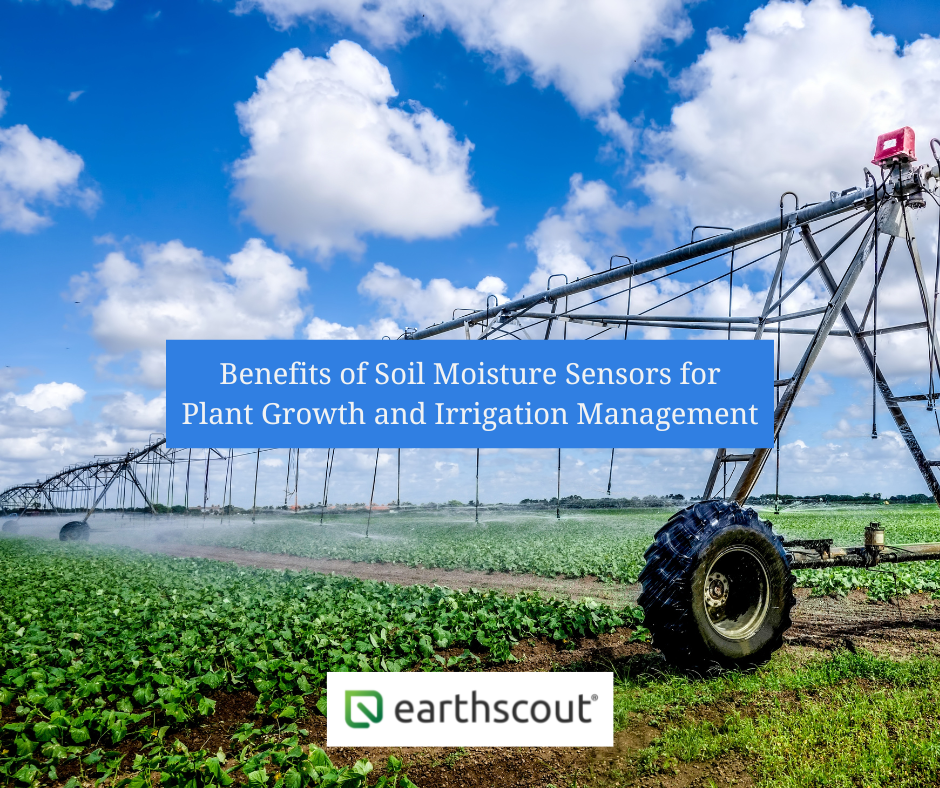There are various methods and strategies with which a farmer can make irrigation decisions. Here we will explore a few methods that are currently being used in irrigation management, some of which are new and emerging practices.
The emerging practice we will focus on in this blog involves an IoT technology: remote soil sensing.
Sustainable Irrigation Begins with the Checkbook Method
One system for scheduling irrigation is called the checkbook method, because it operates just like a bank account.
Rain events are deposited into the soil and the crop withdraws water from the root zone. The amount of water that should be applied is the difference between the two ensuring there aren’t more withdrawals than there are deposits.
This is the quickest, easiest way to begin reducing irrigation applications and requires regional weather stations to track the outgoing “spent” water from evaporation and transpiration.
Adding More Knowledge Increases Accuracy
To improve accuracy further, growers can also use the chart below which, based on soil texture, provides a good estimate of the approximate field capacity (FC), and permanent wilting point (PWP).
- Field Capacity (FC): The amount of soil moisture or water content that cannot be held by the soil and drains away.
- Permanent Wilting Point (PWP): The point when there is no water available to the plant for a given soil type.
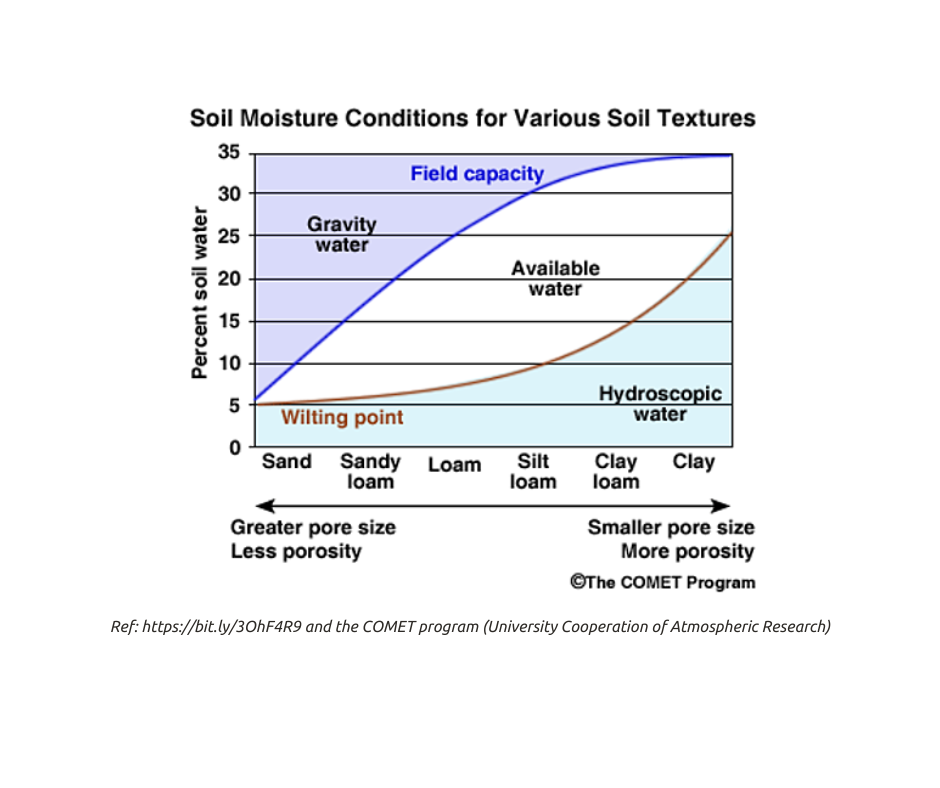
Immediately, with a better understanding of the FC it’s easier to ensure that irrigation is not applied far above the point of water loss. This can get much more complicated as we begin thinking about different root depths that occur throughout the growing season along with infiltration rates (the speed at which water can enter the rootzone from the surface) but to get things started, growers can use the chart supplied FC and PWP to estimate the available water holding capacity (AWC).
The more water your soil can hold, the more you can allow to be “withdrawn” before needing to make another “deposit.” Growers can also use the AWC and PWP with the Checkbook method to avoid yield stress.
If the AWC for an average Loam is around 1.92” of water for 12” of rootzone, then setting a pivot to run well before the Available Water has been “withdrawn” will do the most to prevent major yield-stress.
0.16 (from the AWC) * 12″ rootzone = 1.92″ water

How should we define “well before?”
That’s not a hard a fast rule. Some growers prefer to run at 25% depletion of the AWC, others wait for 50%, still others will prefer to rely on their own knowledge (the art or intuition based on soil feel or plant appearance or anything else).
What’s most important to remember is that the water that is “available” near the PWP is more difficult for the plant to get. When pushing high yields and very high yields there will always be a dance between Nitrogen loss (irrigating above FC) and plant stress which starts to affect yield well before PWP is reached.
AWC knowledge, when coupled with the Checkbook Method and MAD determines the “when” for irrigation to avoid plant stress during yield-critical growth stages.
MAD? If you’re not already familiar with the term, MAD stands for Management Allowable Depletion and is a term used often by University irrigation specialists and agronomists to define when soil moisture depletion directly affects crop yield.
MAD is different for each crop and can differ by growing region and soil type as well, so it’s best to check in with your extension agent to learn more.
For a more in-depth discussion about MAD and the irrigation management practices discussed above we recommend the following websites:
- University of Minnesota Extension: Basics of Irrigation Scheduling
- University of Nebraska Lincoln Extension: Corn Irrigation Management Under Water-Limiting Conditions
EarthScout Soil Moisture Sensors Improve Accuracy Further
An EarthScout wireless soil moisture sensor sends real time moisture data to the EarthScout App on your smartphone to help you make irrigation decisions.
EarthScout products are trusted for university research due to our sensor’s accuracy and proven reliability. Our time domain reflectometry (TDR) sensors by Acclima are the gold standard in soil condition monitoring.
This highly accurate and reliable data is just as beneficial to use for farms of any size, crop, and soil type.
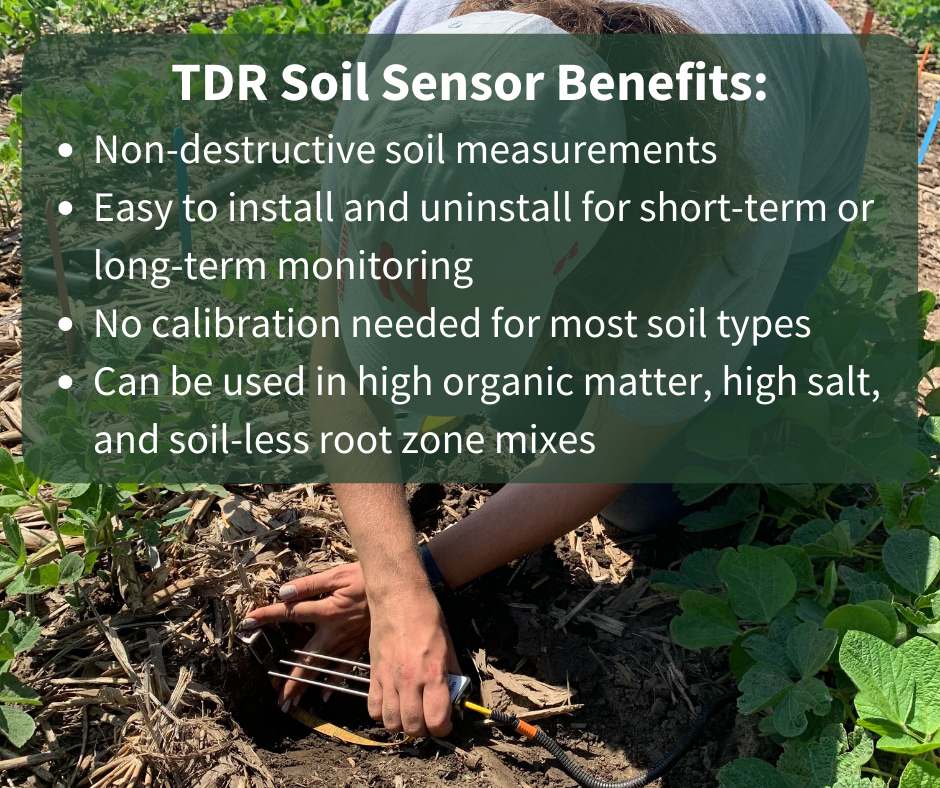
Finding Your Soil’s True Field Capacity and Permanent Wilting Point
In addition to being able to set notifications based on measured soil moisture amounts, you and your EarthScout Grow Coach can use the EarthScout App to find your soil’s true Field Capacity and Permanent Wilting Point. This method is far more accurate than using a soil texture chart and as accurate as sending multiple samples out to a lab for in-depth testing. Plus, it’s done in non-disturbed soil, in place, and under current conditions.
Figure 1 (below) is a chart from the EarthScout App showing soil moisture measurements in an irrigated corn field at two different depths over a 30-day period.
Larger peaks are where more water entered the root zone and smaller peaks show less water. When there is a smaller peak in the 12” deep sensor (orange line) that is because there was less water that moved through the upper root zone.
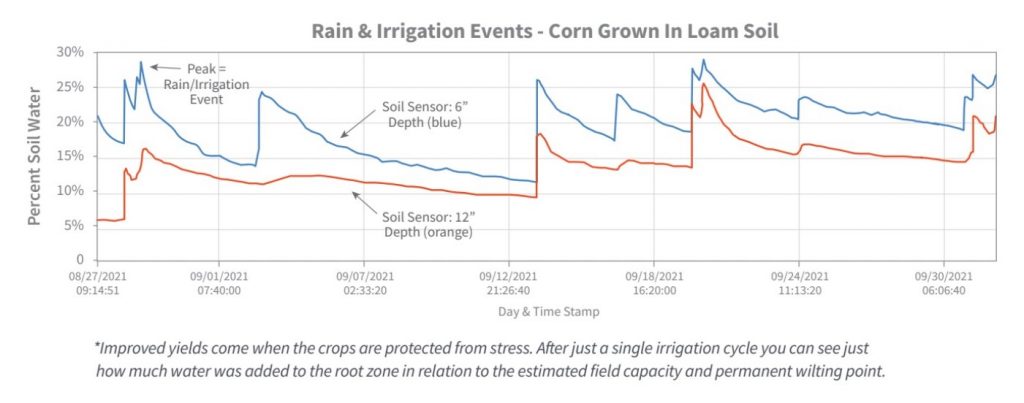
We recommend growers keep notes in the calendar feature of the EarthScout App to mark the rain and irrigation events. This is a great way to match up what you already know about managing irrigation and what the soil sensors are reporting.
How to Use TDR Soil Moisture Measurements
Once the EarthScout TDR sensor(s) is installed, you and your Grow Coach can use a couple of different methods to more accurately estimate the FC and PWP. The fastest, though least accurate method is to check the %Soil Moisture measurement 24-48hrs after a large rain or irrigation event. After a few wetting cycles and assuming that the water is moving above FC the measurements will align around the same value.
A more accurate estimation can be done by using the slope of water drainage (Figure 2 below).
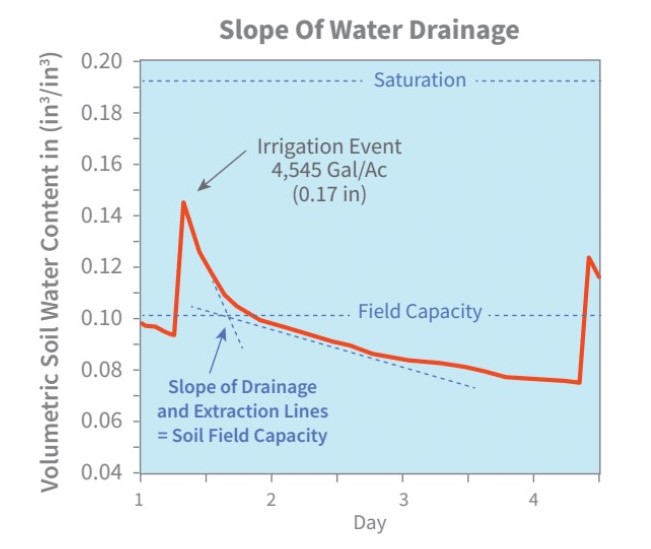
In the case of the irrigated corn field described in Figure 2, which is a Loam, the field capacity could be estimated at between 20-24% after just two irrigation events were measured with the EarthScout. Using just the soil texture chart that estimate would be between 22- 28%.
After four irrigation events it was clear that 24% was more accurate. Even without a measured permanent wilting point, the grower has a much more accurate estimation of the water holding capacity (between 15 – 18% or 1.8” – 2.2” for a 12” root depth instead of 1.5” – 2.6” as determined with just soil texture alone).
Adjusting the MAD points by as little as a quarter of an inch can make a big difference.
Running the pivot 1 – 3 fewer times per season can save a lot of money and preventing stress during yield critical growth stages can help make more money. EarthScout soil moisture sensors take the guess work out of those decisions.
Improving Precision: Dialing in Better Set Points for Irrigation Management
With a full season of irrigation data EarthScout calculates field capacity (FC) and the permanent wilting point (PWP) directly for each location that you measure. Where the Slope of Water Drainage graph (Figure 2) allows the Grow Coach to narrow down the field capacity to around 24%, the “Soil Moisture Parameters” function within the desktop app provides a direct measurement for the field area in question (Figure 3).
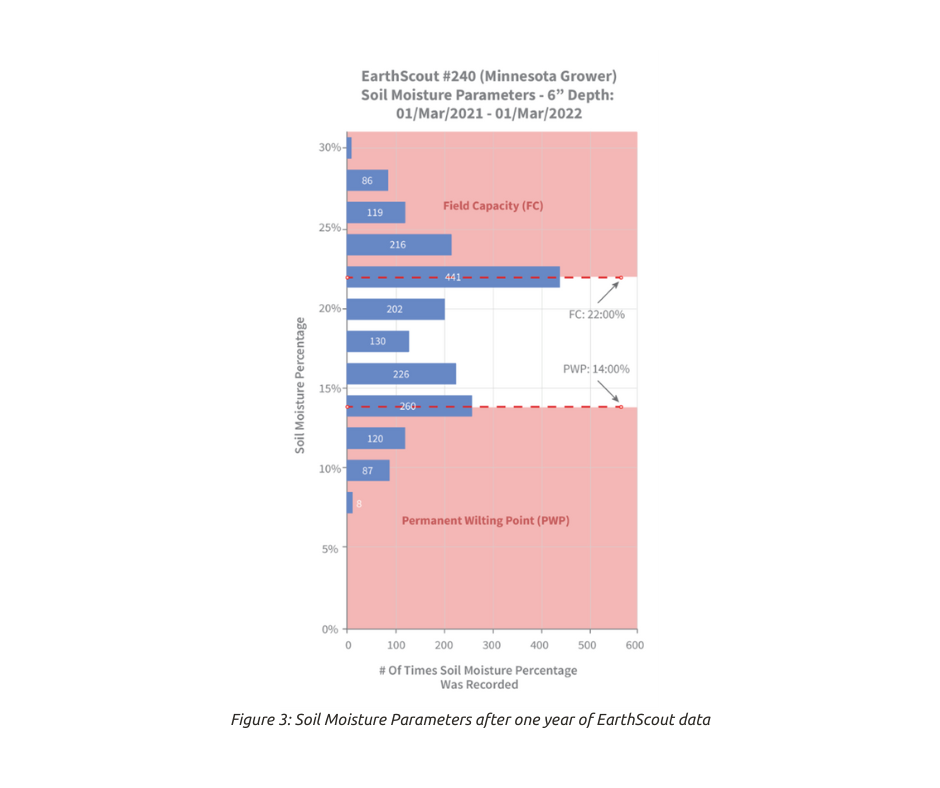
This level of accuracy is valuable to everyone when determining the best time to water and preventing overwatering/leeching.
Plus, it really pays off when dealing with features that are not included in the soil texture estimate but have a strong effect on water holding: high levels of organic matter, manuring, high EC/salts, fields highly cultivated, no-till, and fields that are highly variable in parent material or topographic features.
Please visit our website for more information on EarthScout available products and services. All EarthScout purchases include agronomic support while you work to adjust to new technologies and data driven decision making.
Also, with EarthScout, you enjoy guaranteed data privacy, and no data subscription fees.
Theresa Bayrer (Lead Grow Coach for EarthScout) is a plant physiologist with over 20 years of experience in professional agronomics.
